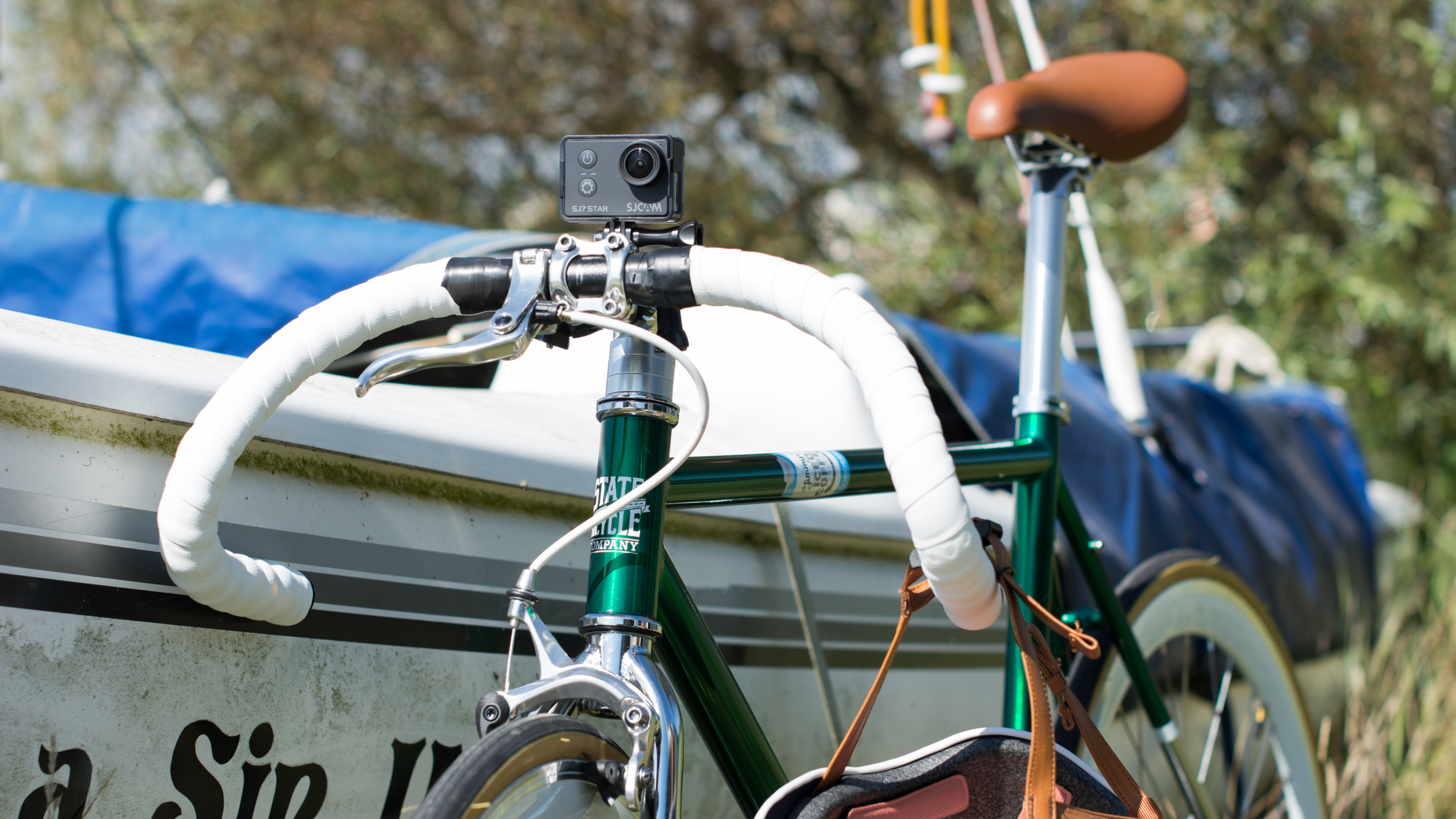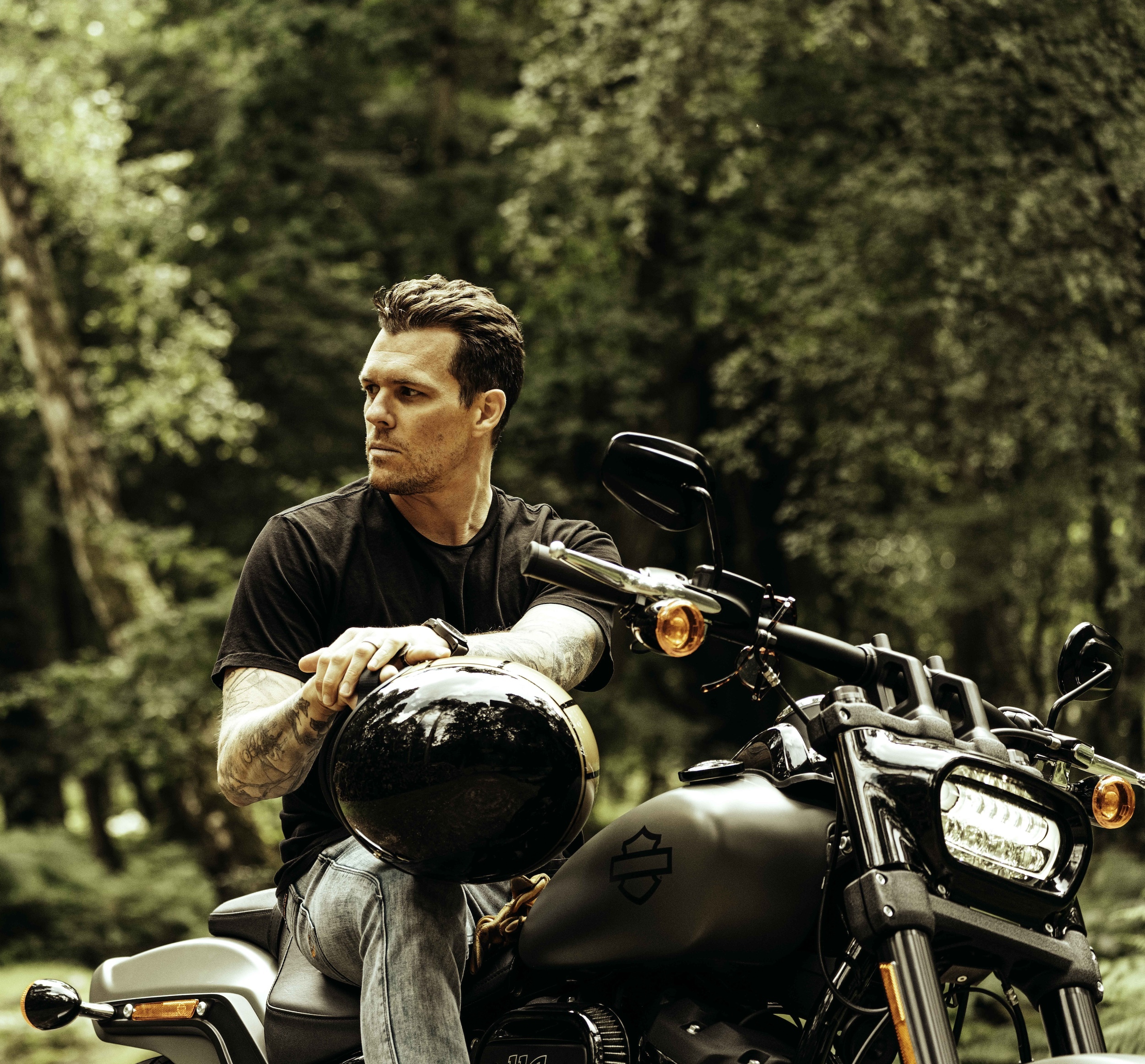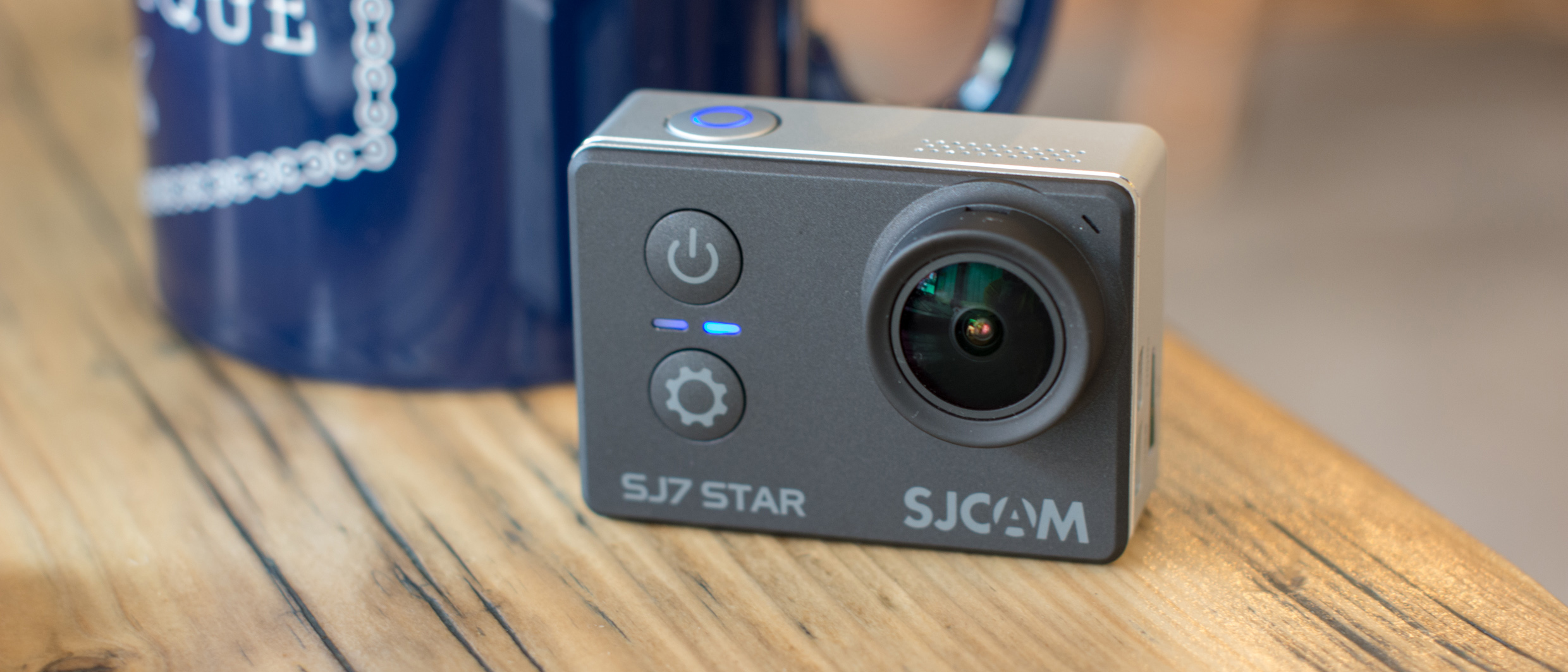Why you can trust TechRadar
Build and handling
- Responsive touchscreen
- Accessories feel cheap
Charging the SJCAM SJ7 Star, and transfer of files, is taken care of via a standard mini-USB cable, which is good news if, like us, you have loads of cables hanging around.
We found that GoPro's use of the newer USB-C cables meant we had to keep the provided wire under lock and key through fear of losing it and not being able to charge the camera. Not so with SJCAM.
There's no visual indicator to show that the unit is charging when it's switched off, meaning the screen has to be activated if you'd like to check status; an indicator on the front of the camera wouldn't go amiss.
Once fully charged, the SJ7 Star starts up quickly, and there's very little delay between start-up and recording or shooting, although the one-button shutter means it's a little more fiddly to switch between stills and video.
To do so, you have to swipe left or right on the rear touchscreen, or swipe up to access the various modes, including self-timer, video lapse and burst photo options.


Accessing this menu is quick and easy, with the touchscreen proving responsive, but exiting menus and clicking on the smaller icons can be fiddly, and often takes multiple attempts.
The various mounts are simple and intuitive to use, while the thumb screws tighten and loosen without a struggle – an issue that typically blights cheaper cameras.
There's also a handy universal mount that screws into most tripod systems, for those who fancy getting creative with timelapse photos or who simply want steady video footage, although the SJ7 Star will have to be placed inside one of the provided cases first.
Performance
- f/2.5 lens
- Sony IMX117 sensor and Ambarella A12S75 chipset
- Gyro stabilisation only at 1080p at 30fps and below
For this particular test, we took the SJCAM SJ7 Star out cycling, attached it to a car during some high-speed tyre testing, and packed it in a rucksack for a sunny hike along the beach.
Cycling is always a good workout for any built-in image stabilization, and in this case it's very easy to see the results with the technology activated, as it resulted in smooth footage when attached to some shaky handlebars.
The SJ7 Star also supports a quick capture mode, which sees video begin recording when the camera is switched on, although annoyingly this isn't the case when the camera goes into standby mode.
Here, the shutter must be depressed once to wake the camera up, and then again to take an image or start recording.
A recent firmware update has improved a number of handling issues, such as the slow-reacting touchscreen menus and some crashing, while app functionality is greatly improved.
On that note, the app is a nice addition to the overall package; it borrows many elements from the GoPro stable, including the design and layout, and it works well and proves easy to navigate.
The SJ7 Star creates its own Wi-Fi network, which you can easily connect your smartphone to in a matter of seconds. Once connected, the app then allows all of the settings to be adjusted, video resolutions changed and files browsed and downloaded to the device.
It feels a lot more intuitive to adjust settings via the app, as the small touchscreen on the back of the camera can be fiddly to use, and it's irksome to constantly have to remove it from one of the protective housings.
Expect battery time to be depleted much quicker when Wi-Fi is activated, though.
Current page: Build, handling and performance
Prev Page Introduction, key features and design Next Page Image quality and editing
Leon has been navigating a world where automotive and tech collide for almost 20 years, reporting on everything from in-car entertainment to robotised manufacturing plants. Currently, EVs are the focus of his attentions, but give it a few years and it will be electric vertical take-off and landing craft. Outside of work hours, he can be found tinkering with distinctly analogue motorcycles, because electric motors are no replacement for an old Honda inline four.
